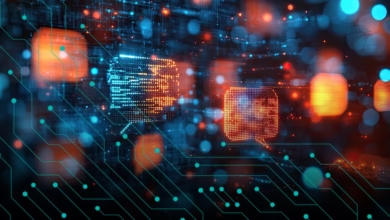5 Cost-Saving AI Strategies for Enterprises | Hugging Face

▼ Summary
– Enterprises often assume AI models require massive compute, but smarter usage can improve performance without excessive resources.
– Task-specific or distilled models can outperform general-purpose models in accuracy while using significantly less energy and cost.
, – Adopting “nudge theory” in system designlike requiring opt-in for high-cost compute, can reduce unnecessary AI usage and costs.
– Optimizing hardware utilization through batching and precision adjustments minimizes wasted memory and power consumption.
– Hugging Face’s AI Energy Score incentivizes energy efficiency, encouraging model builders to prioritize sustainability.
Businesses often assume AI requires massive computing power, but smarter strategies can deliver better results at lower costs. Instead of chasing endless GPU clusters, enterprises should focus on efficiency, precision, and task-specific solutions. Hugging Face’s AI and climate lead, Sasha Luccioni, shares five practical approaches to optimize AI performance while cutting expenses.
1. Match the Model to the Task Not every problem demands a massive, general-purpose AI model. Specialized or distilled models often outperform larger counterparts for targeted tasks while consuming far less energy, sometimes 20 to 30 times less. Open-source models provide a strong starting point, allowing companies to fine-tune rather than train from scratch. For example, distilled versions of models like DeepSeek R1 can run on a single GPU, drastically reducing costs compared to their full-scale equivalents.
2. Design for Efficiency by Default Applying behavioral science principles like “nudge theory” can minimize unnecessary AI workloads. Default settings should prioritize low-energy modes, requiring users to opt into high-compute features only when needed. Think of it like plastic utensils in takeout, making them optional reduces waste. Similarly, AI summaries shouldn’t auto-generate for simple queries like weather forecasts.
3. Fine-Tune Hardware Usage Optimizing batch sizes and precision settings for specific hardware can significantly cut power consumption. Memory utilization varies by hardware generation, so blindly maximizing batch sizes may backfire. Periodic processing instead of always-on models can also conserve resources, especially when real-time responses aren’t critical.
4. Promote Energy Transparency Hugging Face’s AI Energy Score initiative rates models on efficiency, much like Energy Star for appliances. A five-star rating signals peak performance with minimal energy waste. The goal? Encouraging developers to compete for efficiency, not just raw power.
5. Challenge the “Bigger Is Better” Myth Instead of reflexively scaling up, businesses should ask: What’s the smartest way to solve this? Better data curation and architecture often outperform brute-force computing. Many tasks don’t require massive GPU clusters, just smarter planning.
By adopting these strategies, enterprises can reduce costs, improve sustainability, and still achieve high-performance AI outcomes. The key lies in working smarter, not harder.
(Source: VentureBeat)


